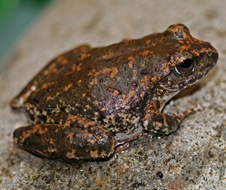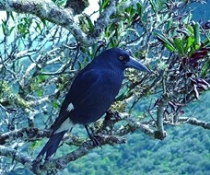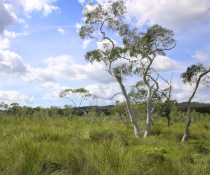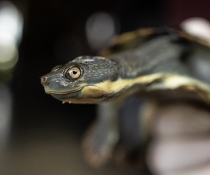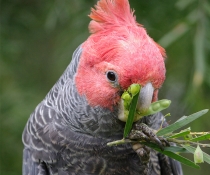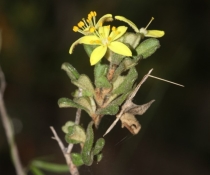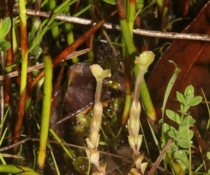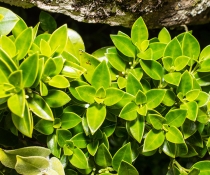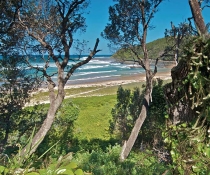Spotted tree frog
The critically endangered spotted tree frog (Litoria spenceri) belongs to an ancient group of Gondwanan tree frogs and has evolved alongside the environment over millions of years. This species lives in only a few high mountain streams in Victoria, and a single location in New South Wales, within Kosciuszko National Park.
Did you know?
In the summer of 1998, with the last remaining frogs in New South Wales succumbing to disease caused by the amphibian chytrid fungus, research scientists set out on an emergency rescue operation to collect frogs for captive breeding.
However, they found the remaining wild population in Kosciuszko had just a solitary, lonely male frog, his unanswered mating calls resounding through the catchment. He was the last wild spotted tree frog left in New South Wales.
With breeding partners sourced from Victoria, this sole surviving male began a decades-long breeding operation to repopulate wild spotted tree frogs into their former habitat in New South Wales.
Saving our Species supports the conservation of spotted tree frogs in New South Wales through translocations and habitat management.
Initially, captive-bred frogs thrived after being released back into the wild. However, it was not long before the frogs faced infection from chytrid fungus, which again decimated their numbers in the wild.
But chytrid has a weakness. It does not like environments with temperatures over 28C. So, in 2014, researchers started an experimental wild colony of spotted tree frogs in a new catchment with warmer conditions. To everyone's delight, they thrived.
The higher temperatures of the catchment, along with the frog's habit of sun basking on warm rocks along the river, resulting in a high post-release survivorship of frogs and subsequent breeding for the first 5 years.
Devastatingly, this newly established population abruptly crashed after a wildfire in 2020, followed shortly by an amphibian chytrid fungus outbreak.
To overcome this setback, in 2022, 80 frogs were released at the site where the species thrived before the 2020 wildfires. Monitoring has since found the released frogs are healthy, disease-free and breeding. The most recent monitoring at the site found over 200 spotted tree frogs ranging in age from juveniles to adults, which is a clear sign the population is recovering from the recent wildfire and disease impacts.
This project is led by the Saving our Species program in partnership with the Amphibian Research Centre in Melbourne, which maintains a breeding colony of spotted tree frogs for release in New South Wales. The NSW Environmental Trust has provided funding for analysing chytrid swabs.
Spotted tree frog (Litoria spenceri). Video: Alex Pike/DCCEEW. Frog Call: Supplied by Nathan Litjens.

